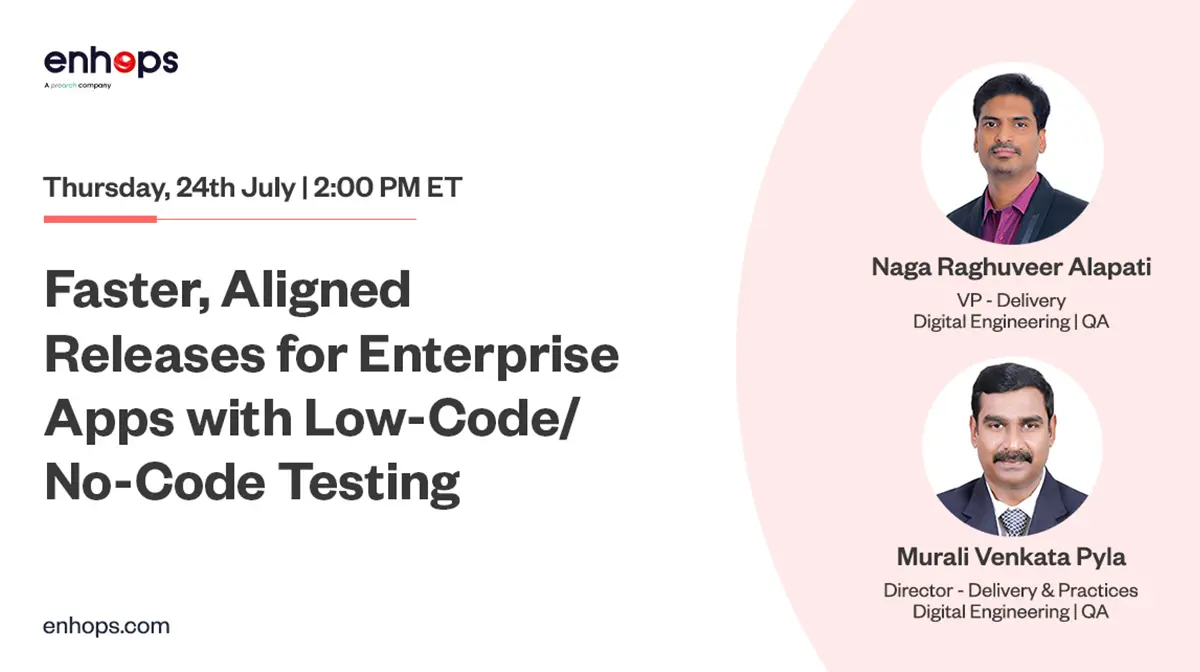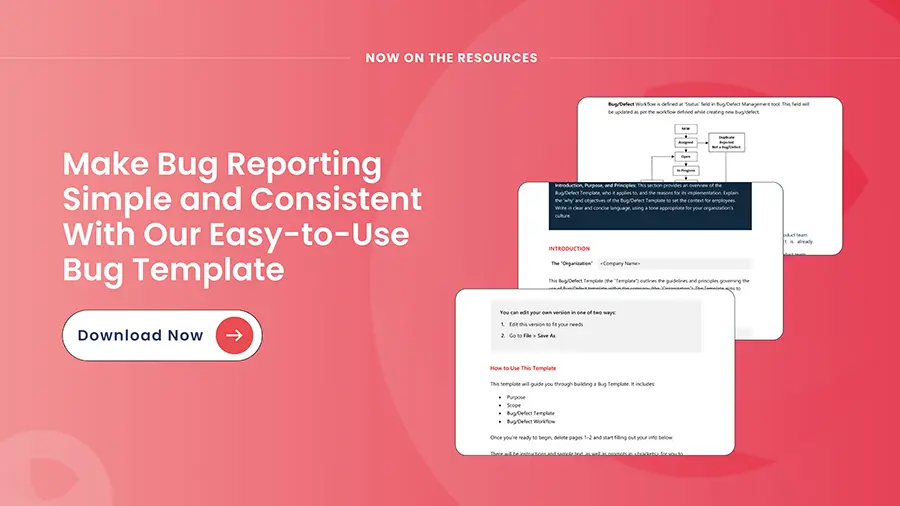Are your digital assets performing at their peak? Are slow load times, system crashes, or scalability issues hindering your business growth? In today’s fast-paced digital landscape, optimizing the performance of your digital assets is vital to meet user expectations and gain a competitive advantage. That’s where performance engineering comes into play, offering a systematic approach to fine-tune your digital systems for optimal efficiency.
So, let’s dive deeper into the world of performance engineering and see how it can help your digital assets to thrive!
What is Performance Engineering
Performance Engineering is a specialized discipline that aims to optimize the performance and scalability of software systems, ensuring they meet predetermined performance goals. It involves a systematic and proactive approach to designing, developing, testing, and optimizing software applications, databases, and infrastructure components to deliver an optimal user experience.
The main objective of Performance Engineering is to ensure that software systems operate efficiently under anticipated workloads and have the ability to scale effectively as the demand increases. It encompasses activities such as analyzing system performance, predicting potential bottlenecks, and resolving issues related to scalability and resource utilization.

Performance issues faced by digital assets and how by introducing performance engineering you can sort it
So, you’ve got your digital assets up and running.
Great! But what about their performance?
It’s a crucial aspect that, if ignored, could lead to a detrimental impact on not only the user experience but also revenue generation. Let’s dive into some of the common performance issues faced by digital assets and how by introducing performance engineering you can sort it
- Challenge –
Slow Response Times: Slow response times can frustrate users and lead to high bounce rates.Solution – Performance engineering techniques, such as load testing and performance profiling, can identify performance bottlenecks, optimize code and queries, and improve system response times. - Challenge –
High Latency: Latency refers to the delay between a user’s action and the system’s response.Solution – Performance engineering can help reduce latency by optimizing network configurations, minimizing data transfer sizes, and leveraging caching and content delivery networks (CDNs) to deliver content closer to the users. - Challenge –
Poor Scalability: Digital assets need to handle increasing user loads without compromising performance.Solution – Performance engineering can assess system scalability, identify scalability bottlenecks, and optimize the system architecture, database design, and caching strategies to ensure smooth scaling and improved performance under high loads. - Challenge –
Inefficient Resource Utilization: Digital assets often face resource utilization challenges, such as high CPU or memory usage.Solution – Performance engineering techniques can analyze resource utilization patterns, optimize code and algorithms, and implement resource monitoring and management strategies to achieve better resource utilization and overall system efficiency. - Challenge –
Lack of Reliability: Unreliable digital assets can lead to downtime, errors, or crashes, causing inconvenience to users and damaging the organization’s reputation.Solution – Performance engineering involves rigorous testing, such as stress testing and failover testing, to uncover reliability issues and ensure that systems are resilient and stable under different scenarios. - Challenge –
Mobile Performance Issues: Mobile apps face unique performance challenges due to limited resources and varying network conditions.Solution – Performance engineering can help optimize mobile apps by reducing data transfer sizes, implementing efficient caching mechanisms, and designing responsive and lightweight user interfaces to deliver smooth and fast experiences on mobile devices. - Challenge –
Third-Party Integrations: Digital assets often rely on third-party services or APIs, which can introduce performance dependencies.Solution – Evaluate the performance impact of these integrations then implement appropriate caching and request optimization techniques and monitor the performance of third-party services to ensure optimal performance and reliability.
Benefits of Performance Engineering
Let’s face it – when it comes to our favourite websites and apps, we want things to run like clockwork. We want them to be fast, responsive and always available. That’s where performance engineering comes in.
By investing in performance engineering, companies can ensure that their digital assets provide users with an improved experience, resulting in increased revenue and lower infrastructure costs. Here are the top benefits of performance engineering:
- Enhanced User Experience: It ensures that systems and applications are highly responsive and perform well under various user loads. This leads to a better user experience, as users can interact with the system quickly and efficiently without experiencing delays or slowdowns.
- Improved System Efficiency: It focuses on optimizing system resources such as CPU, memory, and network bandwidth. By maximizing resource utilization, organizations can achieve higher system throughput, reduced response times, and overall improved system efficiency.
- Cost Savings: By identifying and resolving performance issues early in the development lifecycle, performance engineering helps organizations save costs. Early detection and optimization of performance bottlenecks prevent expensive rework or system failures that could result in downtime, lost revenue, or customer dissatisfaction.
- Scalability and Capacity Planning: Performance engineering plays a crucial role in assessing system scalability and capacity requirements. By analyzing performance metrics, organizations can effectively plan for future growth, identify potential bottlenecks, and scale their systems to handle increased user loads without compromising performance.
- Competitive Advantage: In today’s competitive market, performance is a key differentiator. Organizations that invest in performance engineering and deliver high-performing systems gain a competitive edge. Users are more likely to choose applications that offer superior performance, leading to increased customer acquisition, retention, and positive brand image.
Performance engineering brings numerous benefits to organizations, ranging from improved user experience and customer satisfaction to cost optimization and competitive advantage. By investing in performance engineering practices, organizations can achieve optimal system performance and gain a strategic edge in today’s fast-paced digital landscape.
Performance Engineering Process
Performance engineering is a critical aspect of software development that focuses on optimizing the performance and efficiency of applications. It involves identifying performance bottlenecks, analyzing system behavior, and implementing solutions to enhance the overall performance.
Now, let’s take a closer look at the process.
Requirements Gathering:
- Understand the performance requirements and goals of the application.
- Identify key performance indicators (KPIs) such as response time, throughput, and resource utilization.
- Define performance benchmarks and targets.
Performance Testing:
- Develop a performance test plan outlining the test objectives, scenarios, and metrics.
- Create realistic workload models that mimic production usage patterns.
- Execute performance tests using appropriate tools and techniques (e.g., load testing, stress testing, endurance testing).
- Monitor and measure performance metrics during test execution.
Performance Analysis:
- Collect and analyze performance data captured during the testing phase.
- Identify performance bottlenecks, such as CPU utilization, memory leaks, database contention, network latency, or inefficient algorithms.
- Use profiling tools and performance monitoring tools to gain insights into system behavior.
- Employ statistical analysis and trending techniques to identify patterns and anomalies.
Optimization and Tuning:
- Prioritize and address the identified performance bottlenecks.
- Implement optimizations at various levels, such as application code, database queries, network configuration, or hardware infrastructure.
- Consider techniques like caching, asynchronous processing, load balancing, and resource pooling.
- Continuously test and validate the impact of optimizations on performance.
Scalability Planning:
- Assess the scalability of the system to handle increasing loads and user concurrency.
- Perform capacity planning to determine the resources required to support projected workloads.
- Identify potential scalability bottlenecks and devise strategies to mitigate them.
- Consider horizontal and vertical scaling options based on the application architecture.
Performance Monitoring and Profiling:
- Deploy performance monitoring tools in production to track real-time performance metrics.
- Set up alerts and notifications for critical performance thresholds.
- Continuously profile the application to identify performance regressions and anomalies.
- Use techniques like APM (Application Performance Monitoring) and log analysis to gain deeper insights.
Performance Testing in Production:
- Conduct periodic performance tests in the production environment to validate performance under real-world conditions.
- Use techniques like canary deployments or A/B testing to measure the impact of changes.
- Monitor production performance and identify any degradation or bottlenecks promptly.
- Leverage production monitoring and feedback loops for continuous improvement.
Continuous Performance Improvement:
- Establish a feedback loop for gathering performance-related feedback from users.
- Analyze user feedback, bug reports, and support tickets to identify potential performance issues.
- Prioritize and address performance-related issues in subsequent iterations.
- Emphasize the importance of performance as part of the development process.
The performance engineering process is an iterative and ongoing effort that requires a systematic approach to identify, analyze, and optimize performance bottlenecks in software applications. By following the steps outlined here, organizations can proactively enhance application performance, deliver optimal user experiences, and improve overall system efficiency.
Tools and Techniques for Performance Engineering
Let’s talk about the tools and techniques used in performance engineering. Performance testing tools are essential in running manual and automated tests to measure system performance.
They help identify bottlenecks in the system so your team can address performance issues early on. APM tools, on the other hand, let you monitor and analyze your system’s behavior in real-time.
Here are some commonly used tools and techniques in performance engineering:
- Performance Testing Tools: These tools simulate user loads and measure system performance under different scenarios. Popular performance testing tools include Apache JMeter, LoadRunner, Gatling, and Selenium.
- Profiling Tools: Profiling tools help identify performance bottlenecks by analyzing the code execution and resource utilization. Examples of profiling tools are Java VisualVM, YourKit, Xdebug, and New Relic APM.
- Load Generation Tools: Load generation tools generate artificial user loads to stress test systems. These tools simulate concurrent users and network conditions. Examples include Apache JMeter, Gatling, Siege.
- Caching Mechanisms: Caching stores frequently accessed data in memory for faster retrieval, reducing the need for repeated calculations or database queries. Popular caching tools and techniques include Memcached, Redis, Content Delivery Networks (CDNs), and browser caching.
- Performance Monitoring and Analysis: Continuous performance monitoring and analysis help identify performance trends, anomalies, and bottlenecks in real-time. Tools like Grafana, ELK stack (Elasticsearch, Logstash, and Kibana), and New Relic provide monitoring and analytics capabilities.
Conclusion
Performance engineering plays a critical role in the success of software applications. It goes beyond just meeting functional requirements and focuses on optimizing speed, responsiveness, scalability, and reliability.
It is not a one-time effort but an ongoing process. It requires collaboration between development, testing, and operations teams to continuously evaluate, fine-tune, and enhance application performance. By adopting a proactive and iterative approach to performance engineering, organizations can stay ahead of the curve, deliver superior user experiences, and achieve their business objectives.
Ready to achieve peak performance for your software?
Get expert consultation today and unlock the full potential of your software development process!



